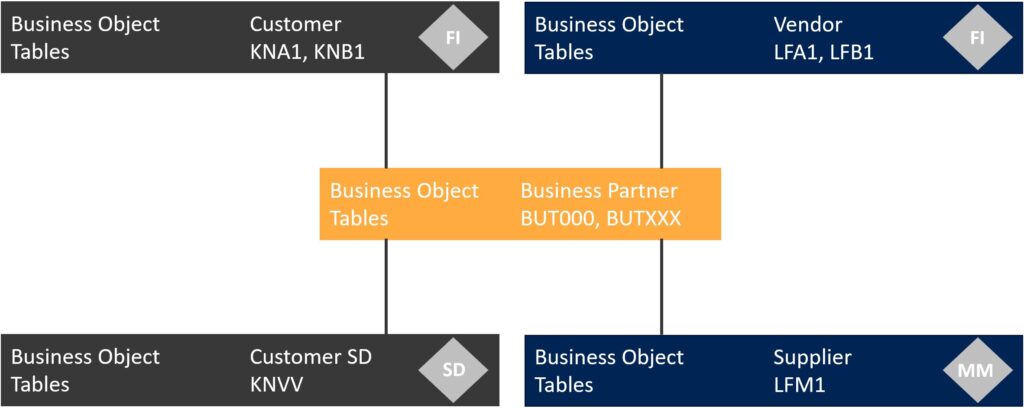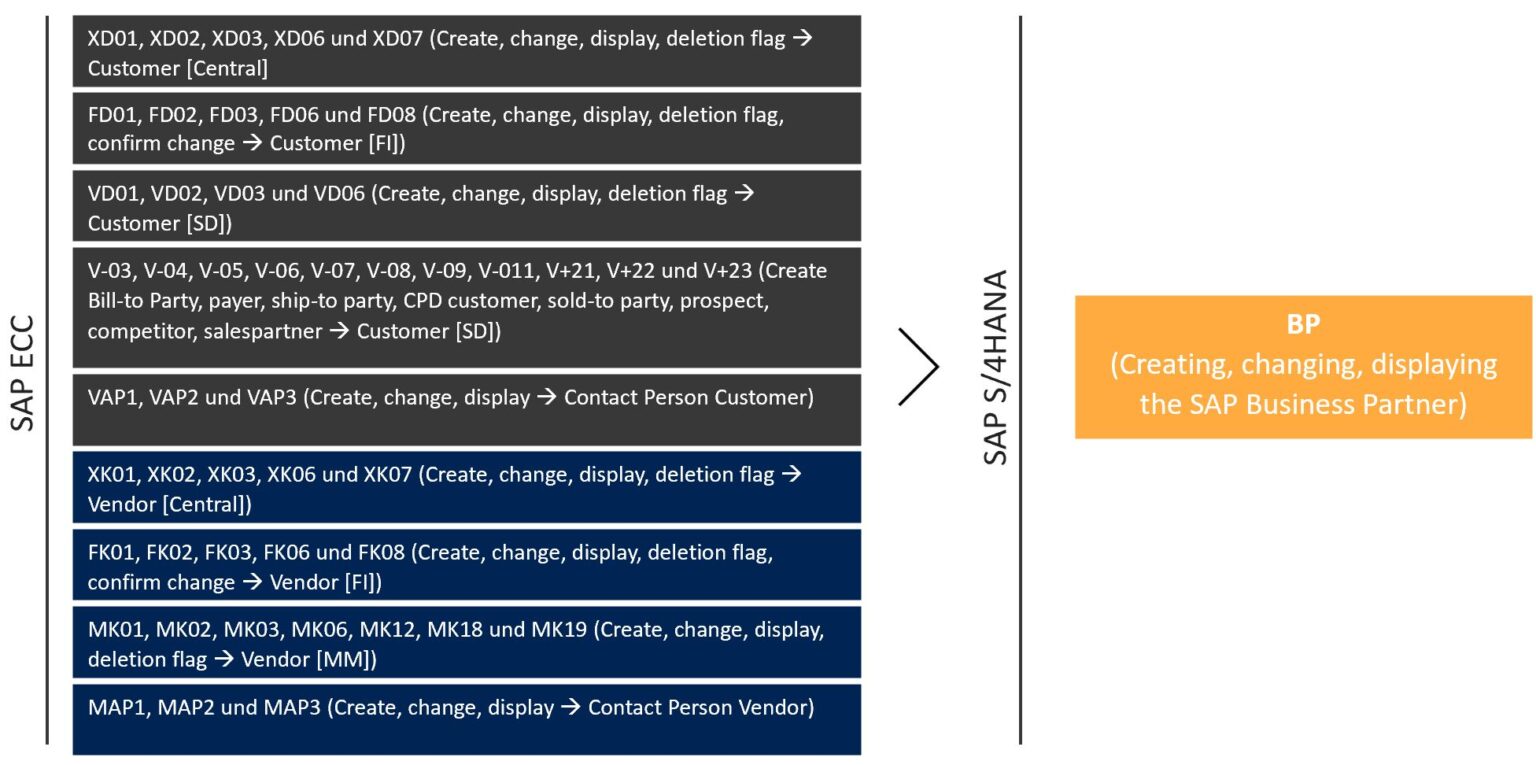The SAP Business Partner as an opportunity
The SAP Business Partner is the overriding master data object for the maintenance, administration and mapping of all business relationships of your company. The SAP Business Partner has been used for the strategic modules since 2001:
- SAP Collections Management (FSCM-COL),
- SAP Credit Management (FSCM-CR),
- SAP Treasury and Risk Management (TRM),
- SAP Loans Management (FS-CML),
- SAP Customer Relation Management (CRM),
- SAP Supply Chain Management (SCM),
- SAP Supplier Relationship Management (SRM)
- SAP Global Trade Services (GTS).
During this time, the SAP Business Partner served as a supporting database object. With SAP S/4HANA, the SAP Business Partner became a strategic object for displaying existing business relationships. Especially with SAP S/4HANA Release 1511, the SAP Business Partner has gained relevance, as its implementation has become mandatory for customer and vendor master data.
The different business relationships are added to the SAP Business Partner in the form of roles. A role corresponds to a business relationship and extends the range of functions. Some of the roles delivered by SAP are briefly mentioned below.
- General Business Partner (000000)
- Customer (FLCU00/FLCU01)
- Supplier (FLVN00/FLVN01)
- Contact person (BUP001)
- Interested party (BUP002)
- Employee (BUP003)
- Ship-to-Party (CRM002)
- Invoice recipient (CRM004)
- Collections Management (UDM000)
- Credit Management Business Partner (UKM000)
The overriding business partner enables the centralised maintenance and storage of general master data. This includes, for example, name, bank data, communication data and relationships. The general data is maintained once in the role "General Business Partner" (000000) and can then be called up for every other role assigned to the business partner. This allows for one-time and central maintenance as well as a reduction of the database volume. By sharing the data with different roles, the data only has to be stored once per business partner in the database. The synchronisation between the business objects (business partner, customer and supplier) is done by the customer-vendor-integration (CVI).
The CVI is the central interface between customer, supplier and business partner. Its task is to keep the data of the three business objects synchronised. In detail, the tables for business partners (BUT*), customers (KN*) and suppliers (LF*) are continuously updated. The tables CVI_CUST_LINK (mapping customer to business partner) and CVI_VEND_LINK (mapping supplier to business partner) are used to identify the customers and/or suppliers belonging to the SAP business partner. The relationships are stored in these tables.

The synchronisation of the tables enables the aforementioned data sharing to reduce the amount of data. In addition, the CVI is used during the introduction of the SAP Business Partner for the initial synchronisation of customer and supplier to the Business Partner. In order to be able to use the CVI, CVI customising must be carried out in the SAP ECC or S/4HANA system as part of the new business partner implementation, based on the Business Partner Blueprint.
In addition to the business partner roles, there are also business partner types that determine the type of SAP business partner. A distinction is made between person, organisation and group. Business partners of the type "Person" are natural persons, such as employees or freelancers. The business partner type "organisation" is used for legal persons/companies and the type "group" for a married couple, for example.
Maintaining the SAP Business Partner in SAP S/4HANA
The maintenance for customer and vendor master data changes with SAP S/4HANA, as the transaction "BP" becomes the central transaction for the maintenance of the business partner. It replaces the following transactions for creating, changing, displaying and deleting customers, suppliers and contact persons.

In summary, the SAP Business Partner is rightly one of the many simplification items that must be introduced before the switch to SAP S/4HANA. Maintenance has been centralised through the transaction "BP" and simplified through the role-based concept of the Business Partner. Furthermore, the database volume will decrease in the medium to long term, as data sharing can be used through customer vendor integration, which prevents the duplicate maintenance of general data.
